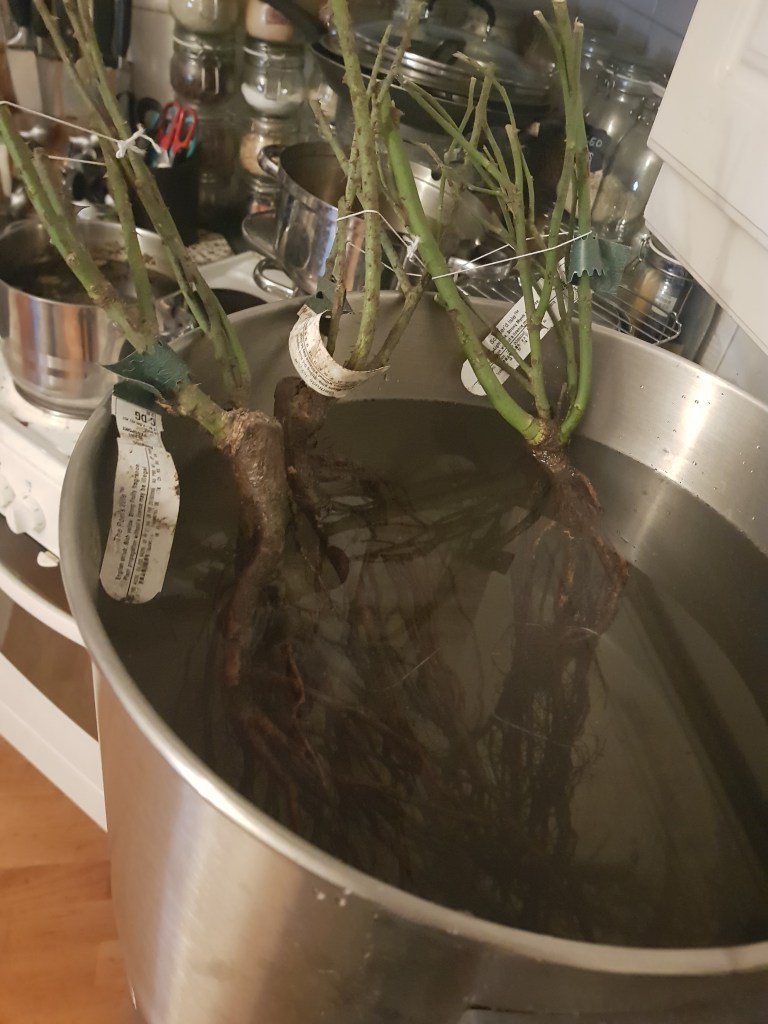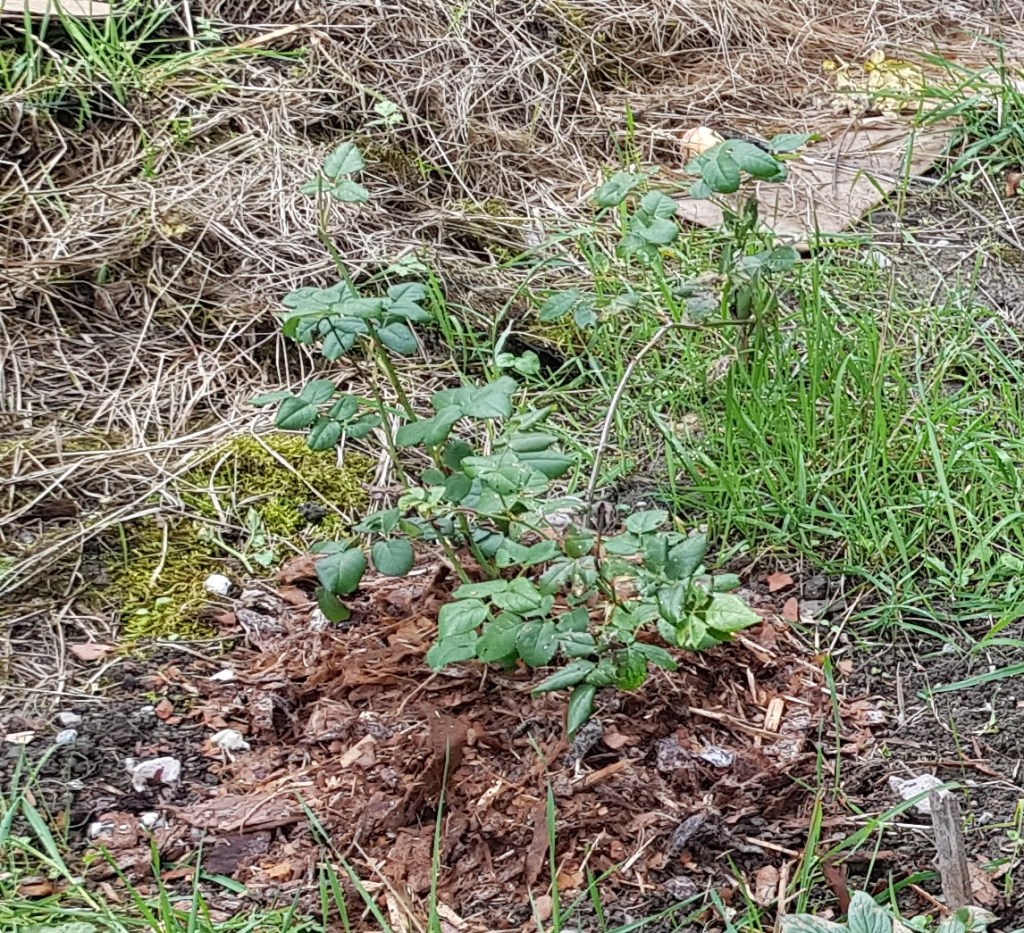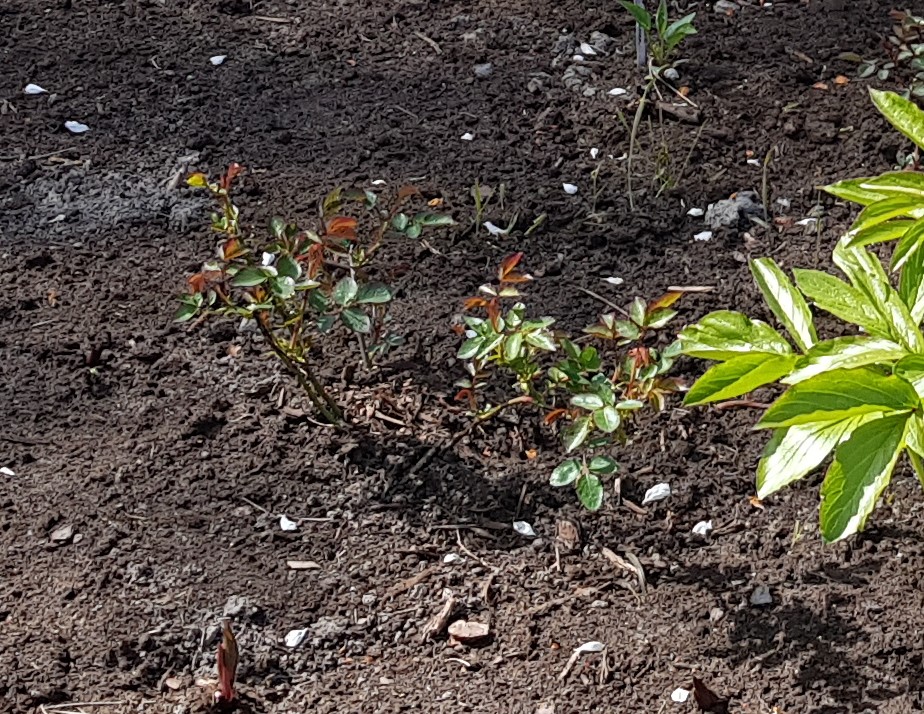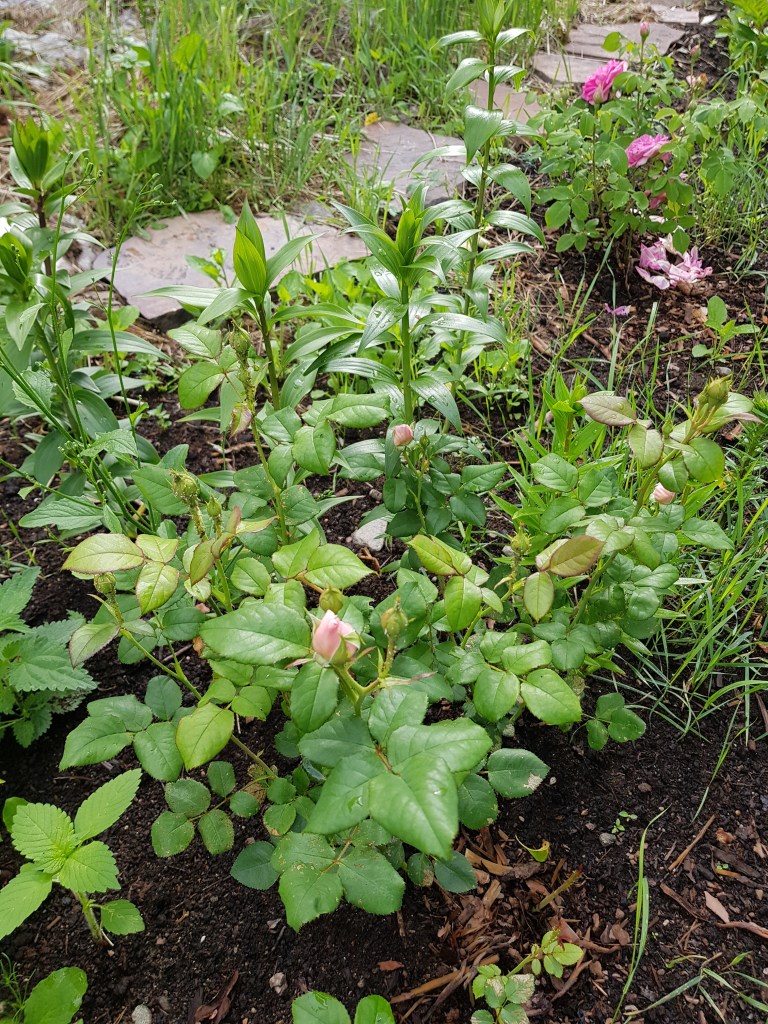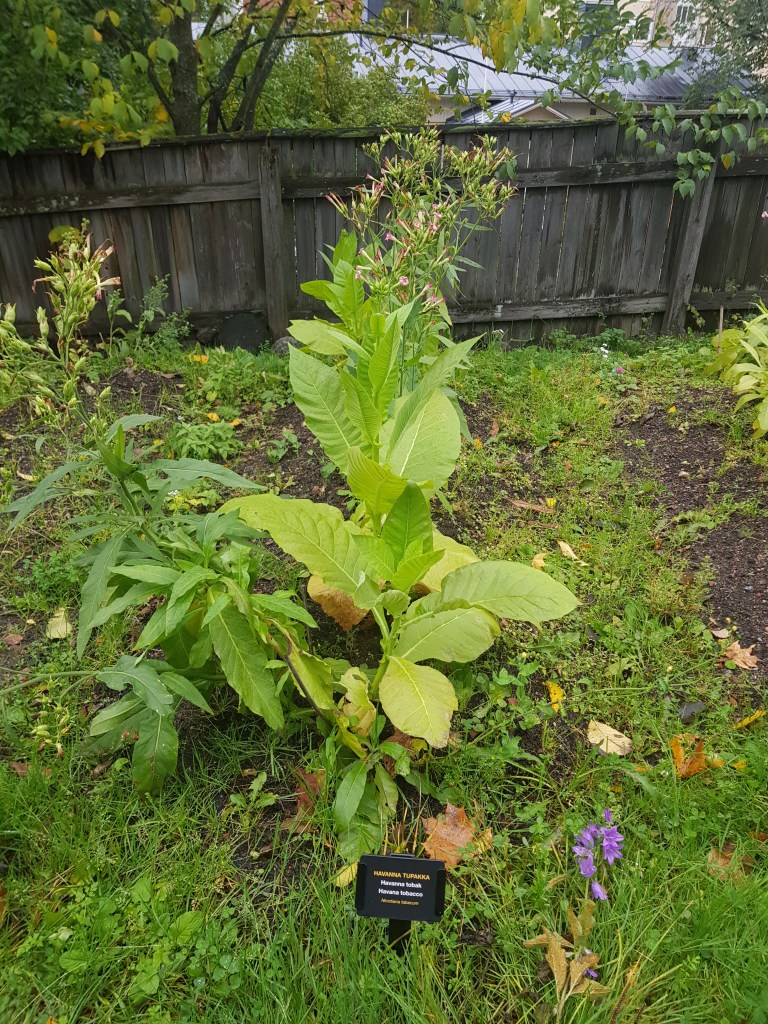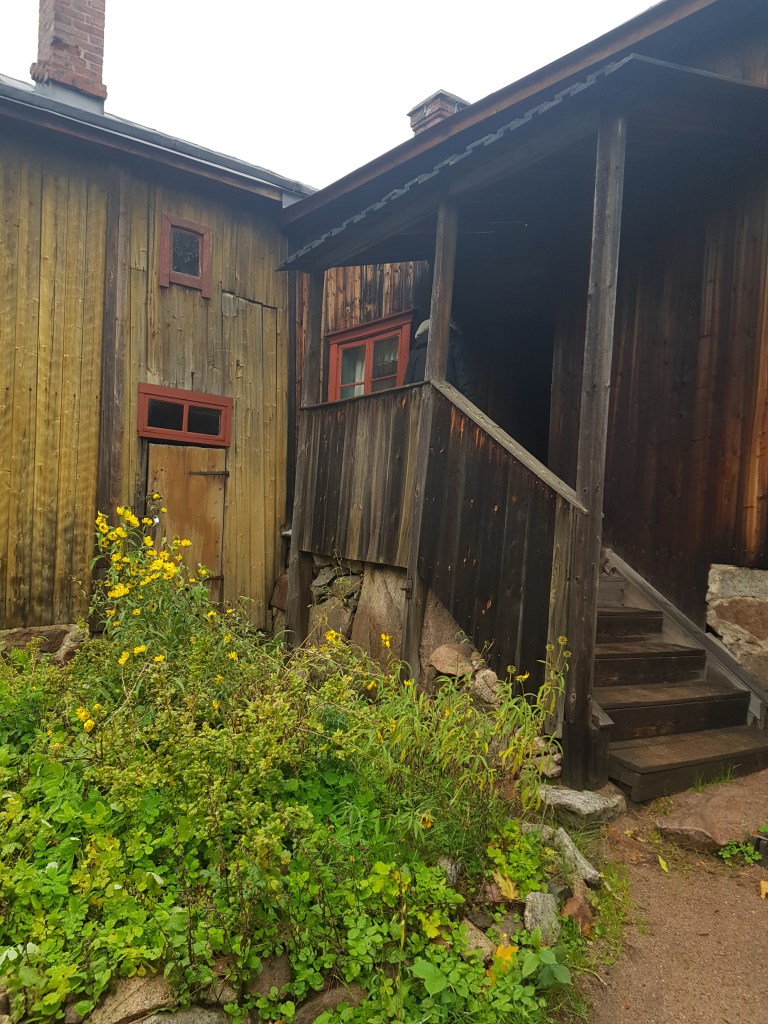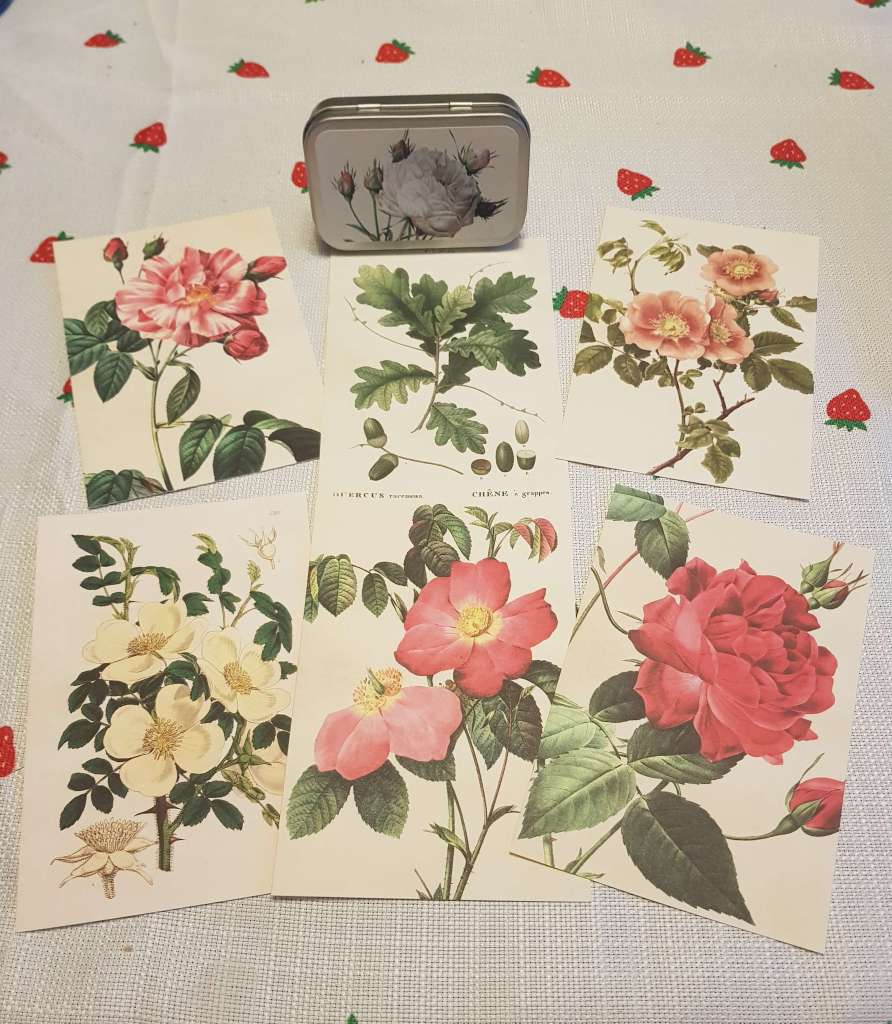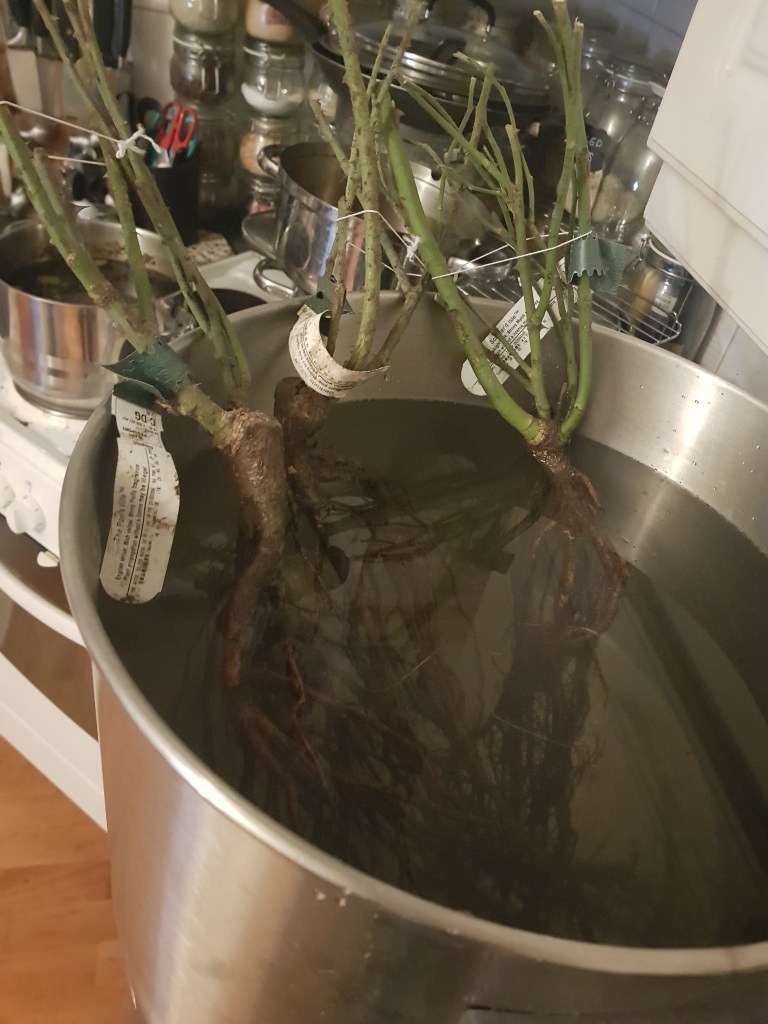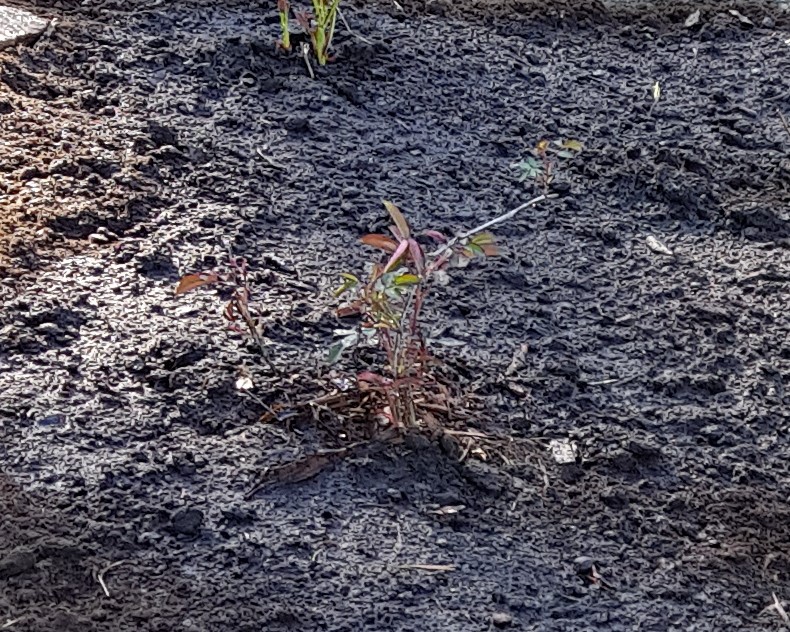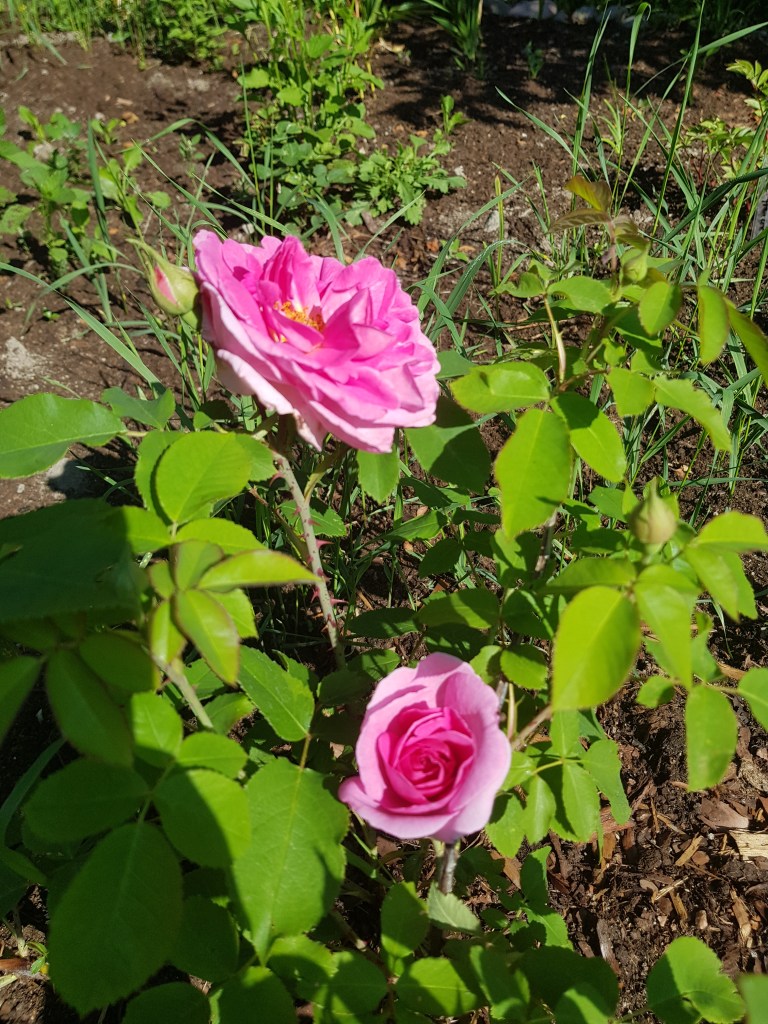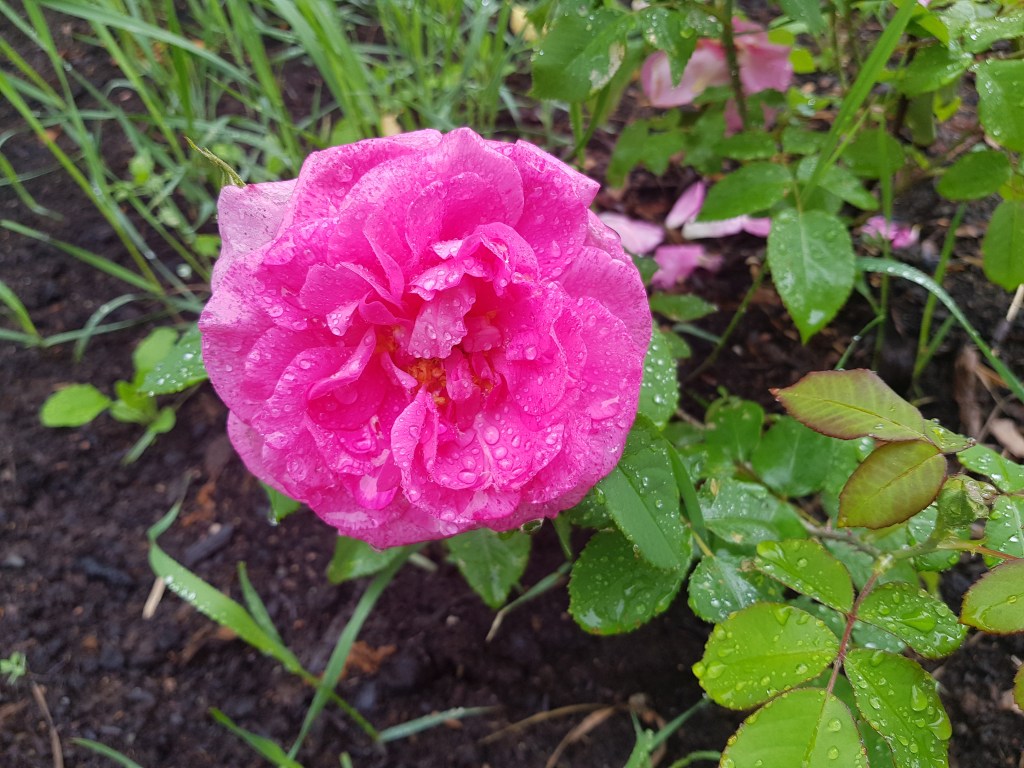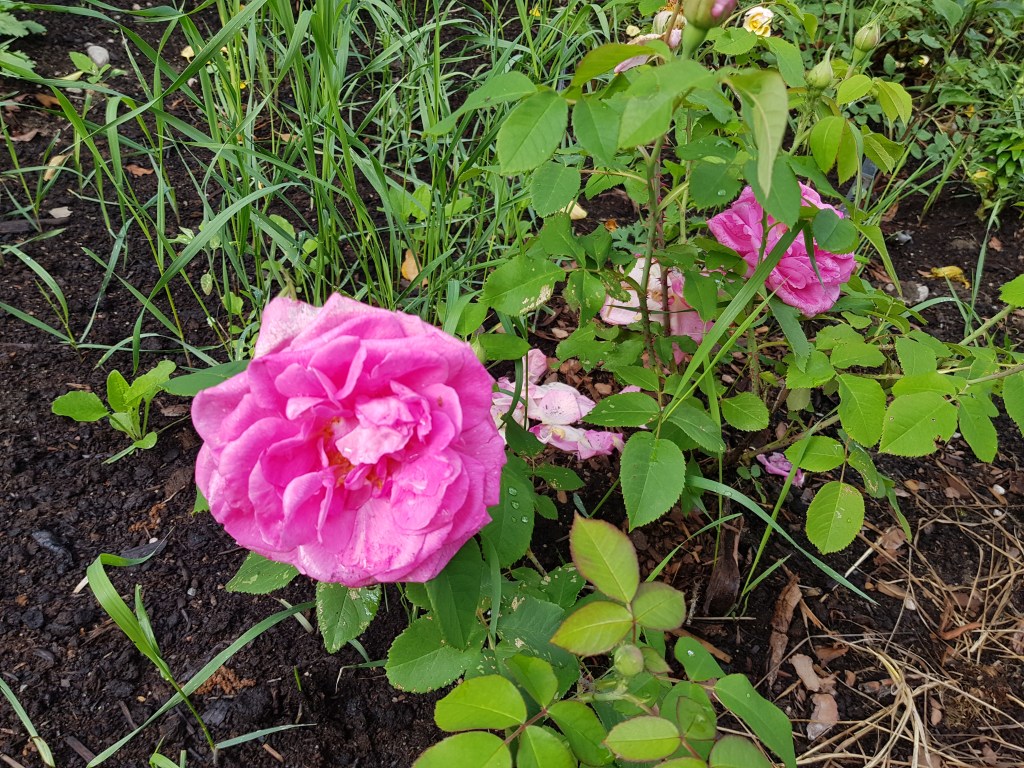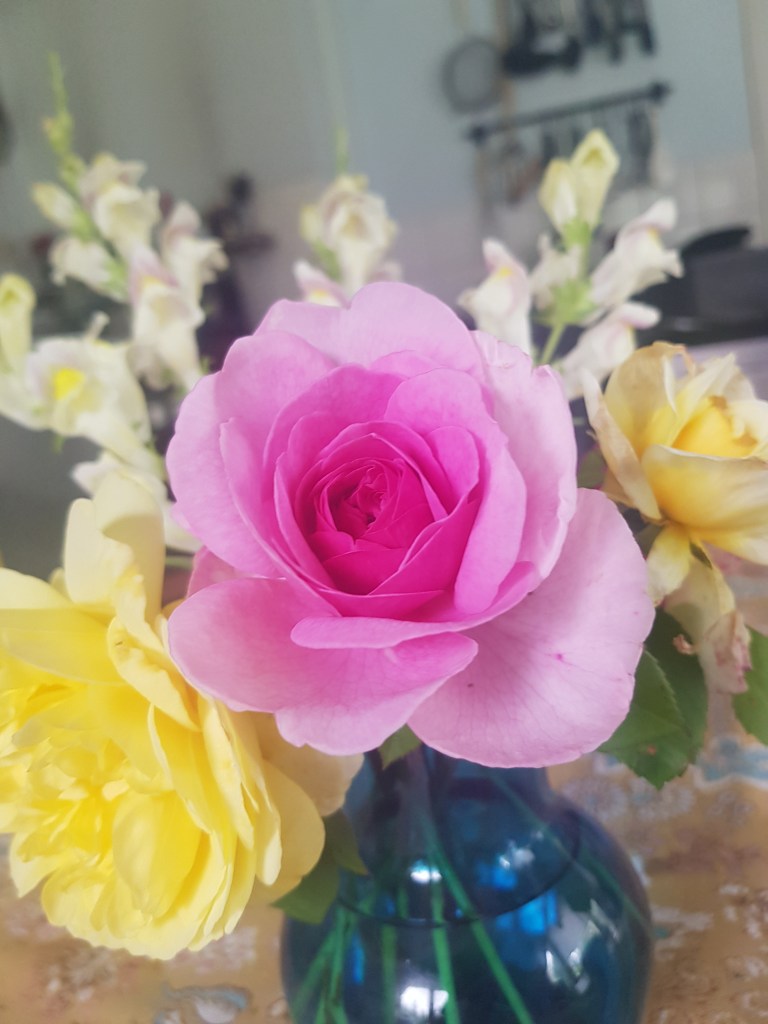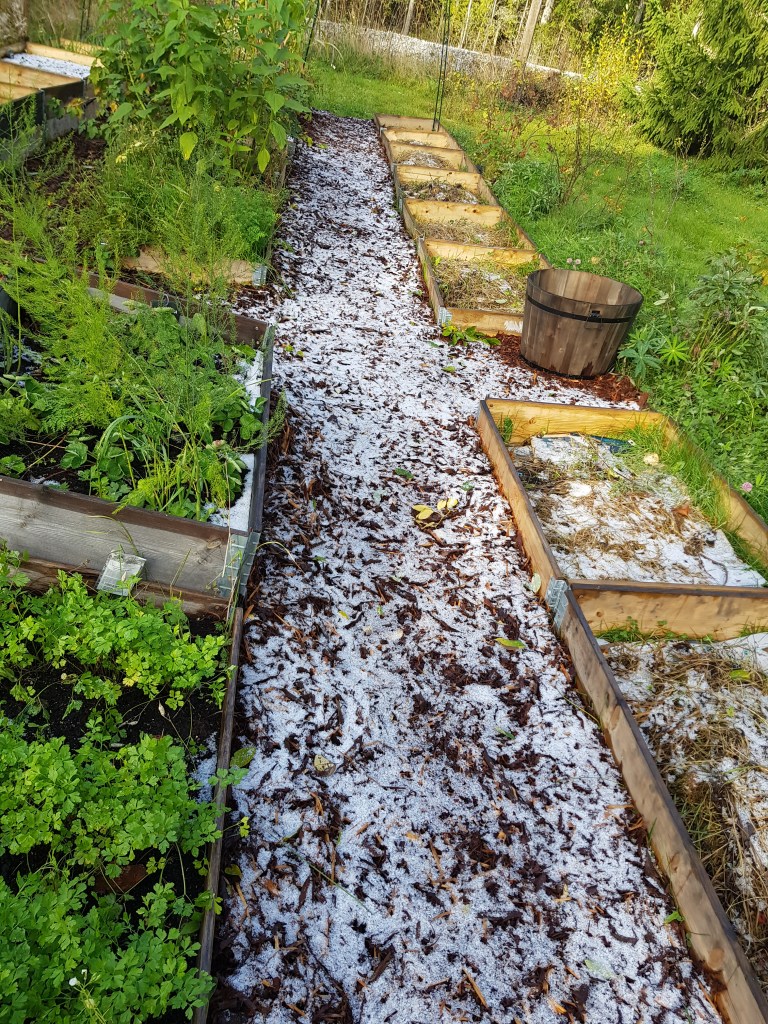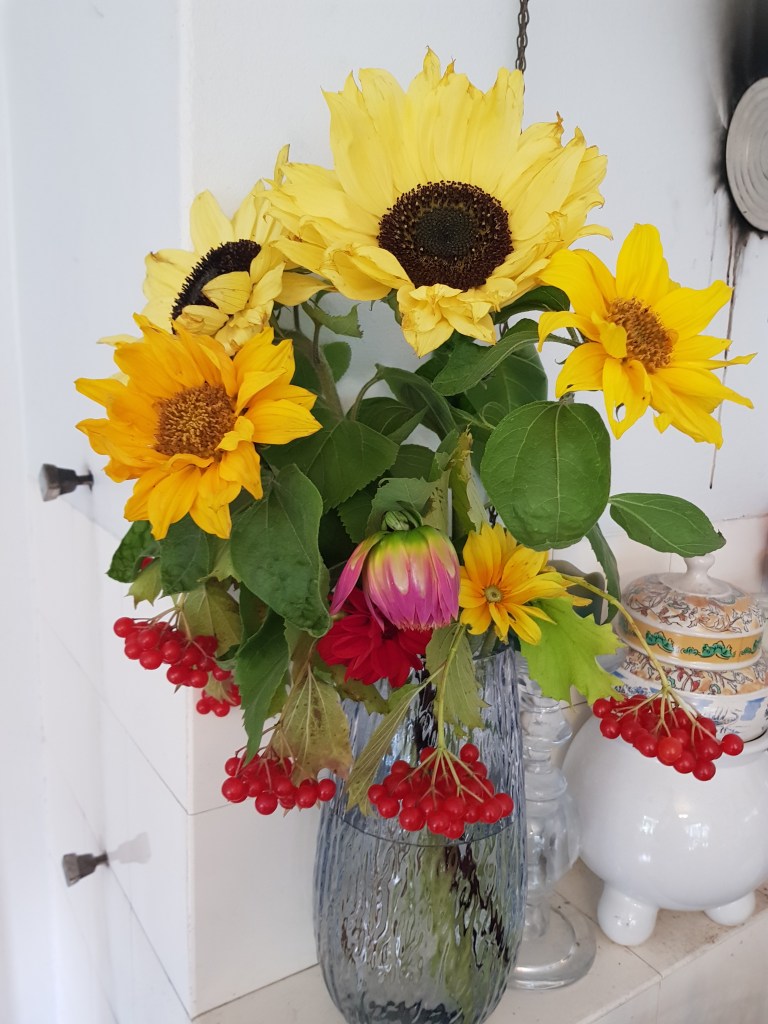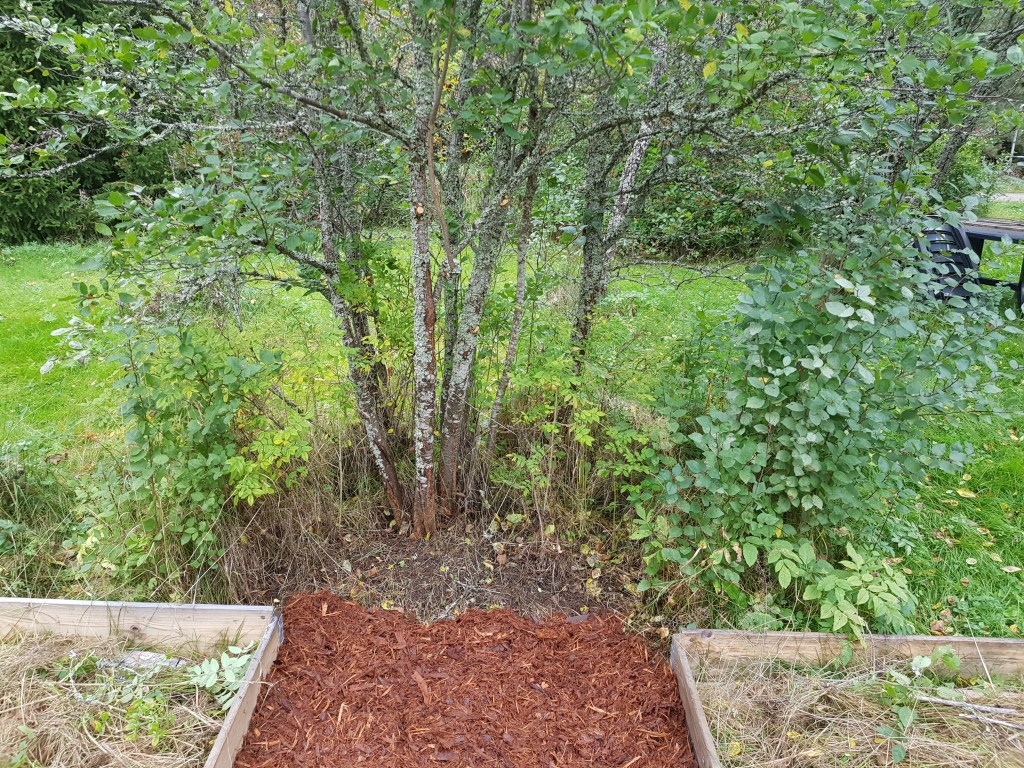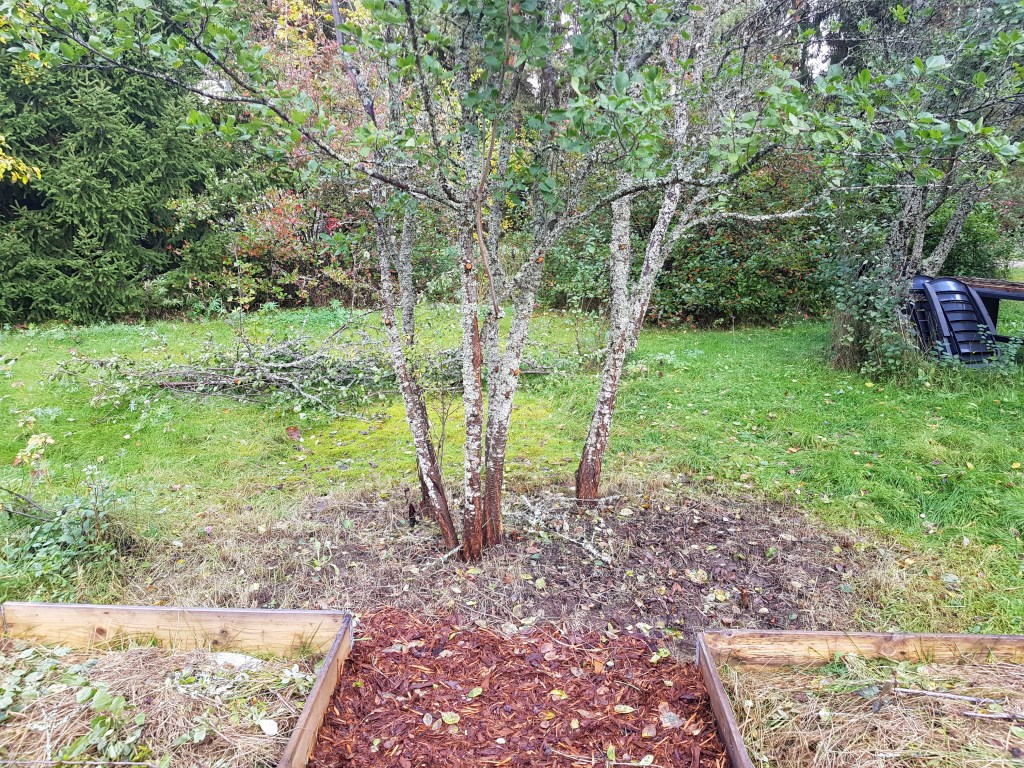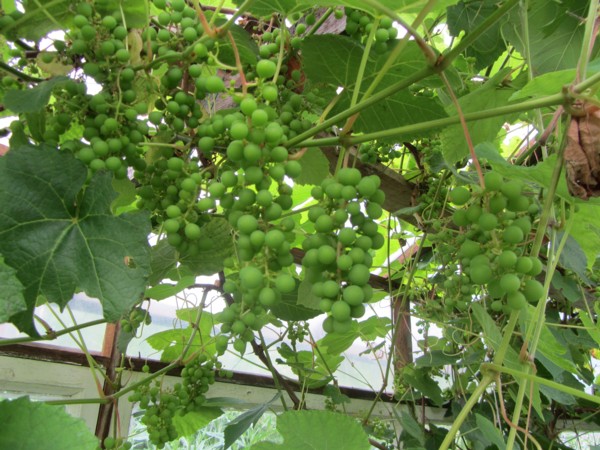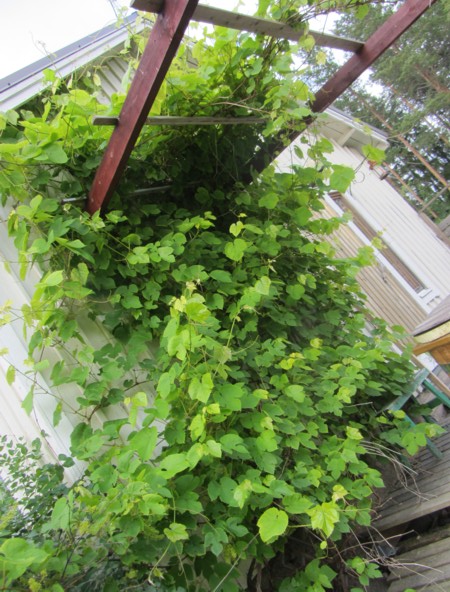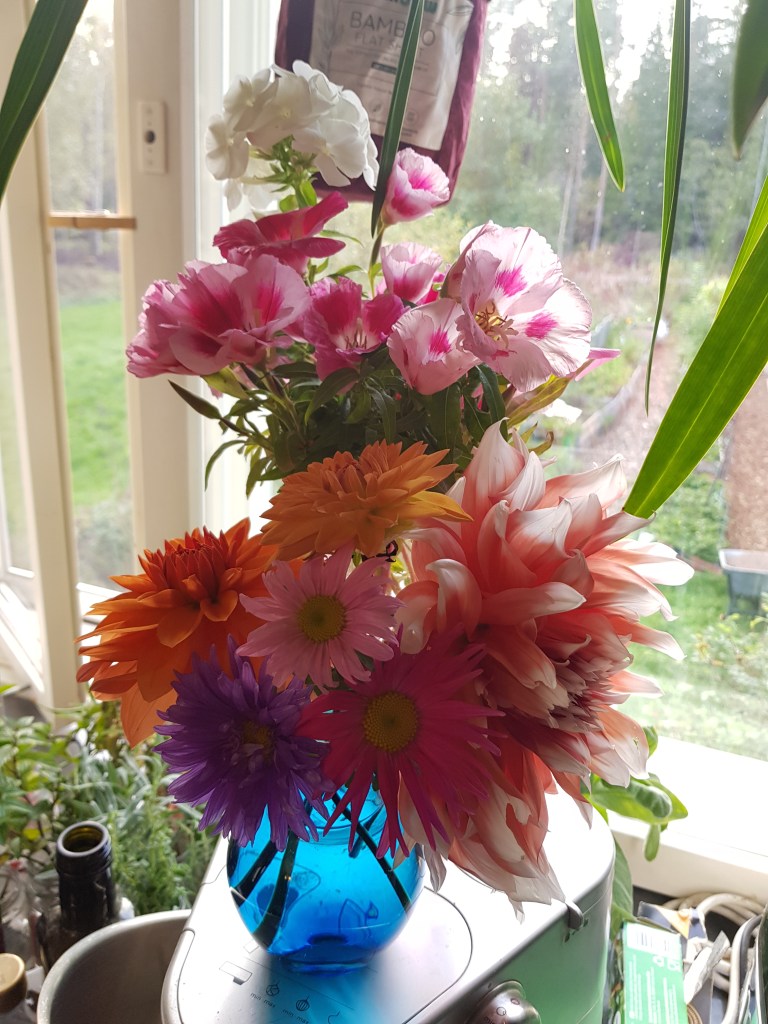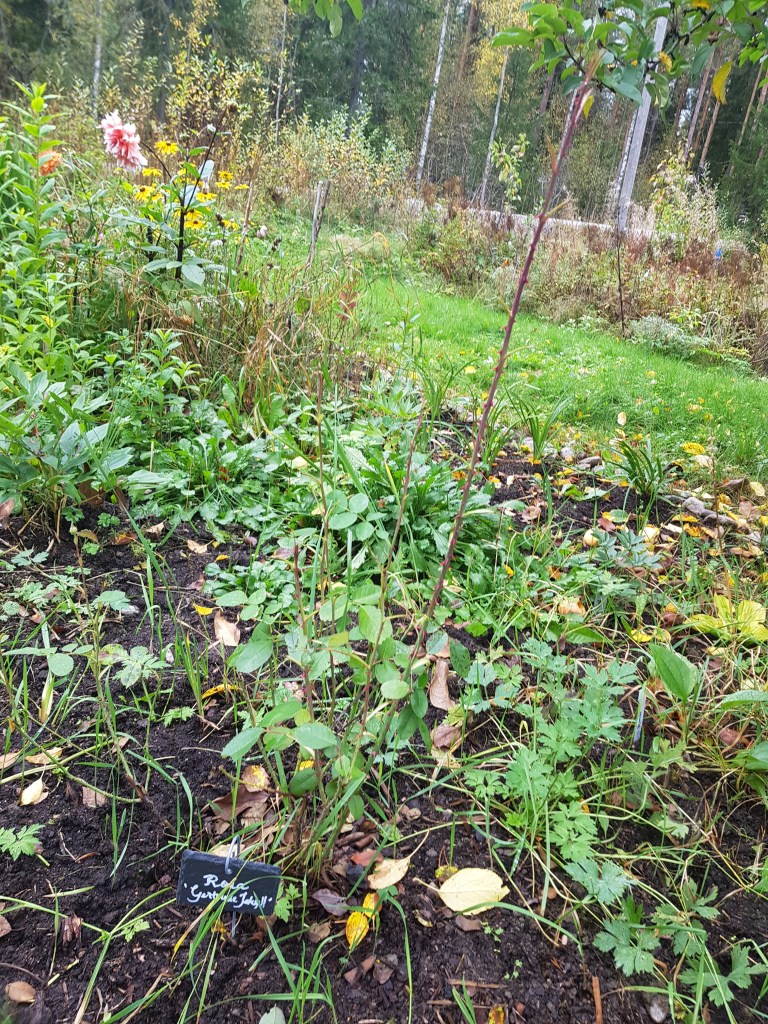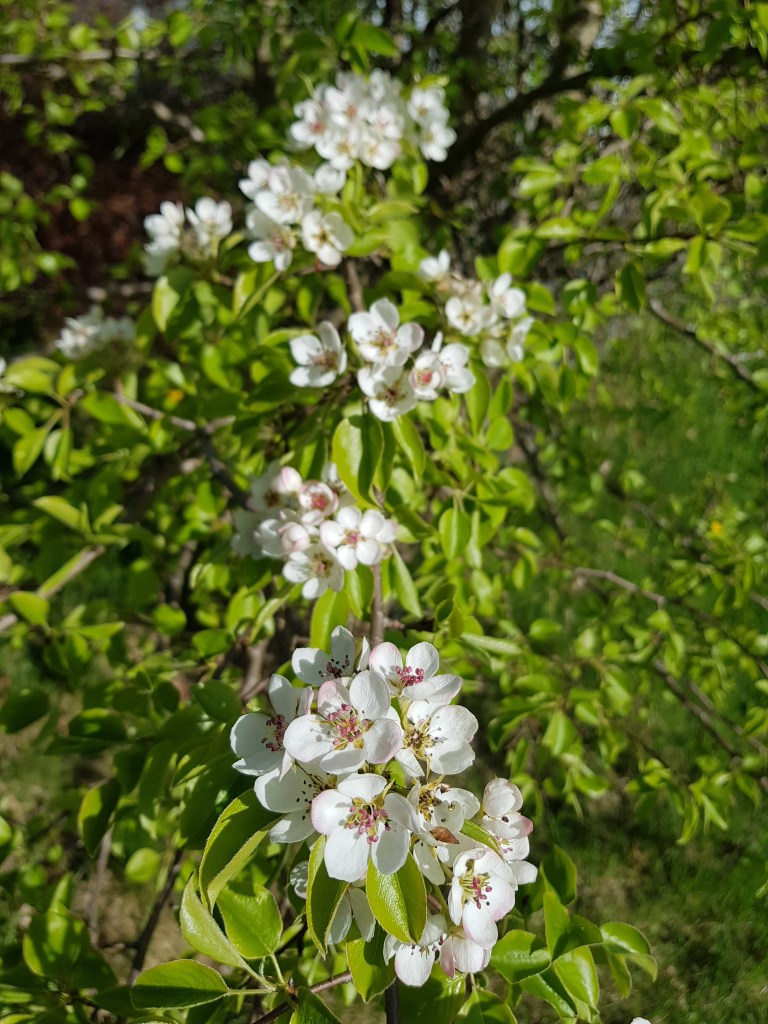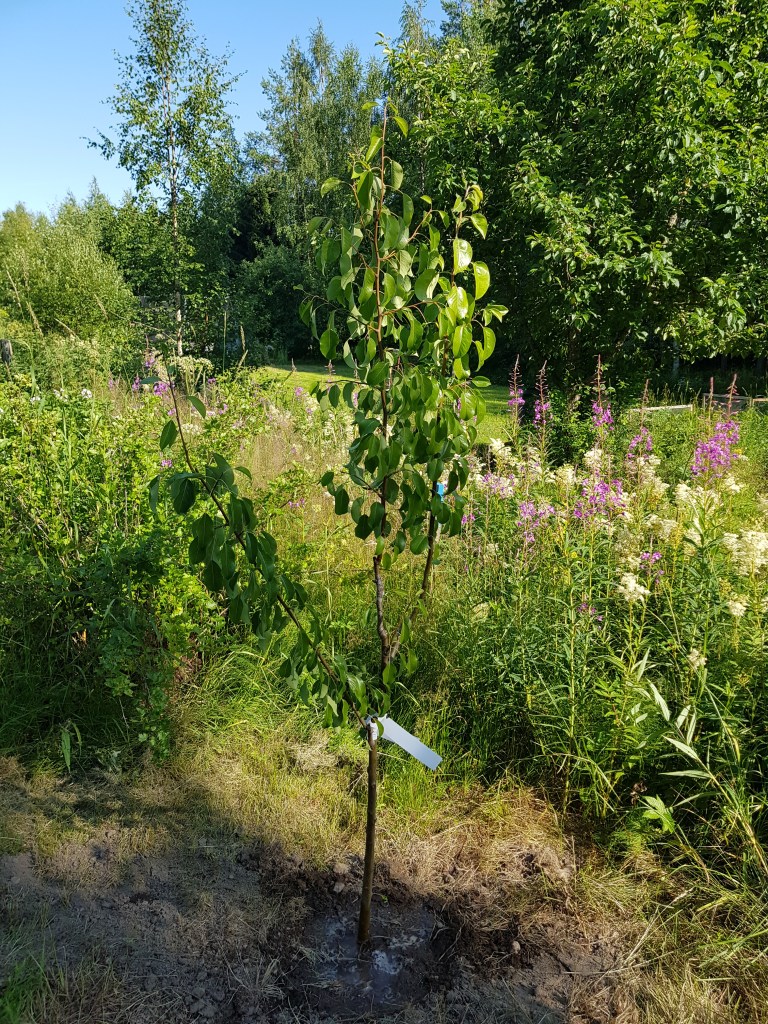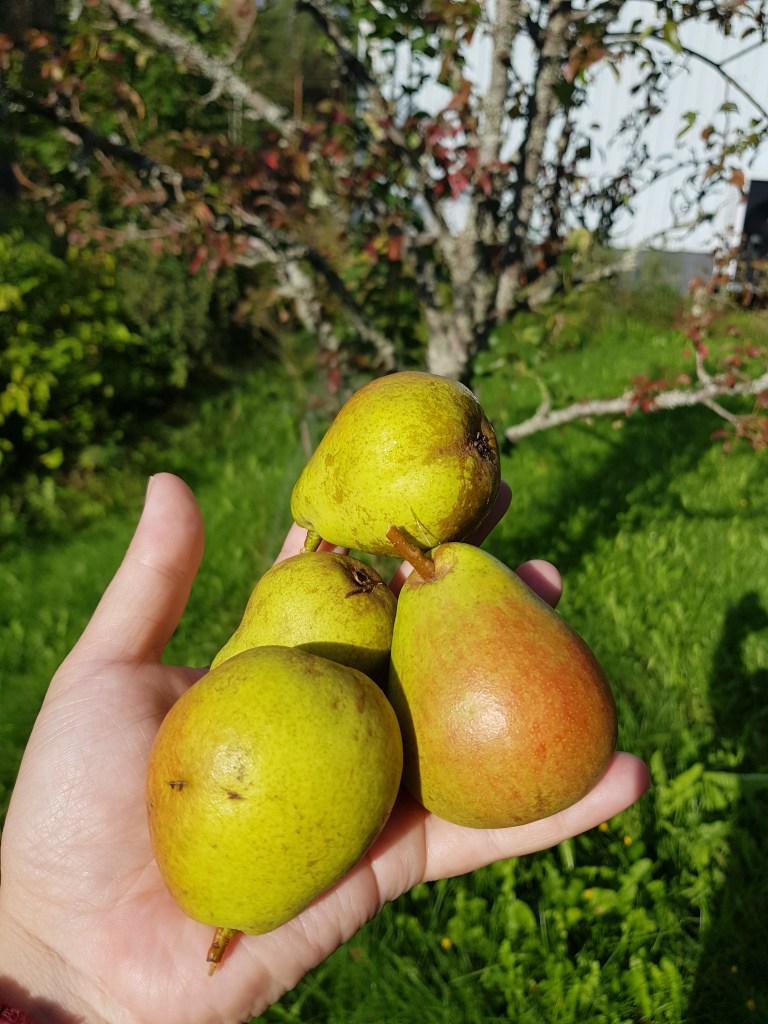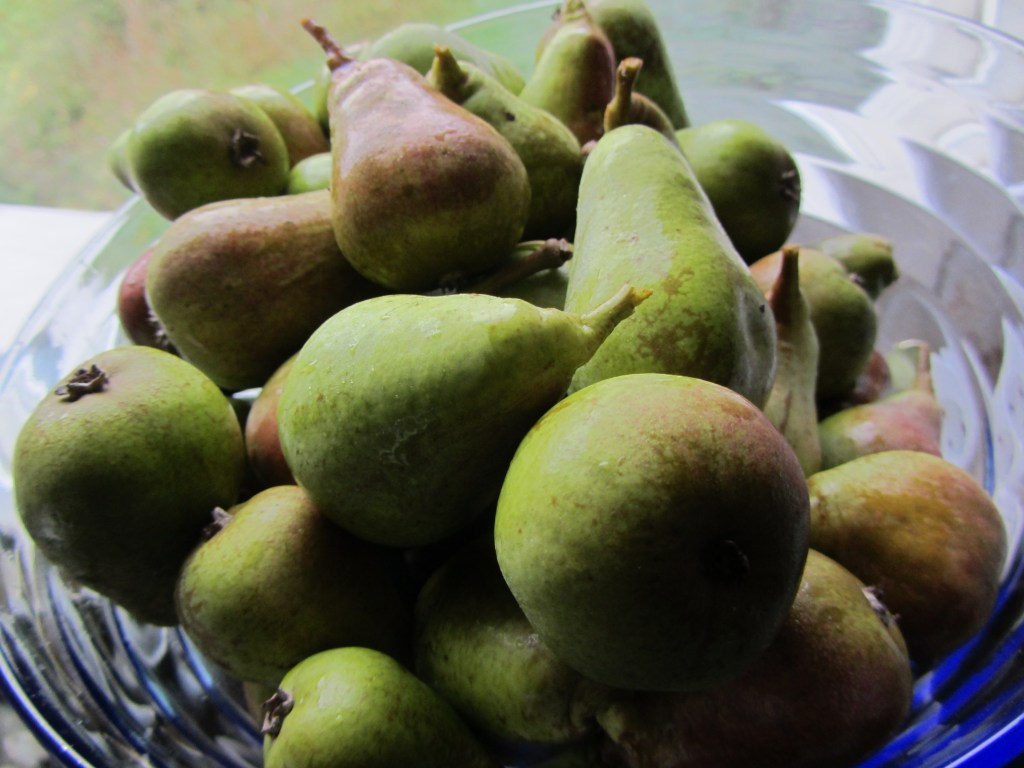Alright, storytime! So not far from where we live, there’s an island with three nuclear power plants. The government has been conducting research projects there to find uses for the heat in the wastewater as the cooling system circulates it out of the plants. After all, we’re five degrees of latitude from the Arctic Circle and can use all the heat we can get, no matter what the season. So back in 2001, they ran plastic pipes carrying the heated water under a field, then planted it with grapes and other warm-season crops, effectively providing them with frost-free growing conditions all year round. They are also using the heat for small-scale fish farming. The projects are still ongoing, as far as I know.
Now, a decent percentage of the town population (yours truly and the previous occupants of our house included) have either worked on the island, currently have work associated with it, or have friends and family who have. That’s why cuttings from those experimental grapevines are now living in our garden.
Vitis vinifera ‘Zilga’ (viinirypäle) is a vigorous blue grape of Latvian extraction. It is very cold-hardy, withstanding temperatures down to -40°C, and enthusiastically productive. I suppose even with heated ground, it’s not bad to hedge your bets. Our plants must be nearing two decades old by now, and are in the prime of their lives.
I am not a particularly experienced pruner, so these vines have had to deal with my attempts at learning over the years. Mostly, I just try to keep them neat and ventilated. I made the mistake of allowing them to go unpruned last year and the greenhouse vine has now escaped its confines, insinuating itself into the shrubbery and trees beyond. The vine trellised to our outbuilding has engulfed its supports and most of the wall as well. We have meters and meters of vine, it’s insane. My plan for early next spring is to prune both vines back hard, around the same time as the apple trees. I’ll use the abundance of woody materials to construct a decorative garden hut next to the vegetable beds, hopefully big enough for kids to play in.
Did I mention that these things produce a LOT of grapes? They’re pretty tasty, too, with a hint of blueberry. However, there’s no way our family can eat that many grapes. They are also individually on the small side with plenty of seeds, which makes them not as appealing to kids, despite being very sweet and juicy. Mostly, I steam juice the fruit and can it for use over the winter, often mixed with apple or berry juice. This year, I plan to make grape jelly for the first time. They also make a nice rosé wine and our grapevines’ parents are indeed being used for that purpose. We’re not really wine drinkers, though, so juice it is.
The other thing I always forget to try with these plants is stuffed grape leaves, which I like at restaurants. Hopefully, a note here will remind me next year. Anybody got a good recipe?
Final count:
Vitis vinifera ‘Zilga’ – 2 sprawling vines, one in the greenhouse and one threatening to consume the left side of our outbuilding



